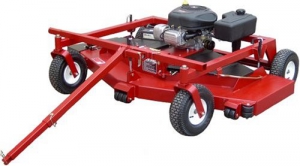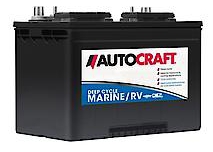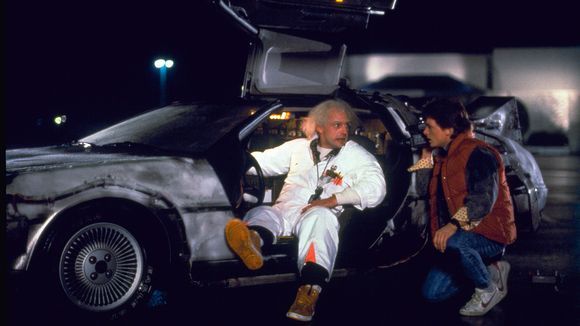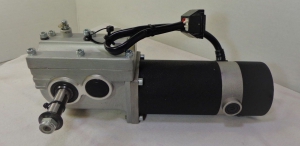One goal of this series is to demystify the art/science of robotics. Let me state that more clearly: I want you to be able to build a self-driving robot with a slick, friendly interface, even if:
- You know little about software
- You know little about electronics
- You know nothing about robotics
While we won’t be able to cover all the basics of programming and electronics in detail, I do hope to point you to resources that will get you up to speed. If you have any doubt about your ability to learn technology without an engineering or computer science background, I hope you will put that doubt to rest and jump in.
Additionally, I’d like to give you a good idea of what all the tools and parts will cost. When I was starting out, the obscure pricing of some professional grade parts was very frustrating (here’s looking at you L1/L2 RTK GNSS).
Now, let’s jump in and talk about the drivetrain parts we’ll use for our robotic large-scale mower.
Bill of Materials (BOM) — Drivetrain
 1. Pull-behind mower — We’re going to take a 60 inch (1.52 meter) pull behind mower and turn it into an autonomous rover. If you buy the mower new, you’re out $2k. I snagged the mower we’ll use off Craigslist for $700. If you’re on a budget, don’t sweat buying the big mower. We will provide an alternative rover implementation built on the standard electric wheelchair you can often source from Craigslist for ~$200.
1. Pull-behind mower — We’re going to take a 60 inch (1.52 meter) pull behind mower and turn it into an autonomous rover. If you buy the mower new, you’re out $2k. I snagged the mower we’ll use off Craigslist for $700. If you’re on a budget, don’t sweat buying the big mower. We will provide an alternative rover implementation built on the standard electric wheelchair you can often source from Craigslist for ~$200.
2. 24v DC electric wheelchair motors — We’ll use two electric wheelchair motors to power and steer the robot. The front wheels will swivel freely — this is what’s called a skid steer drive setup. You can source these from eBay for ~$65 each. Let me push a little and say that if you’re actually going to follow along, you’ll save yourself considerable headache if you can come up with a used electric wheelchair. In one swoop you solve 3 problems: motors, batteries and frame.
 3. Deep cycle batteries — We’ll use two of these as well. Depending on the size, you usually pick these up from your local auto parts store for ~$80 each. If you go for the big batteries, you’re out $100. Fortunately, Advance Auto Parts has a wildly ambitious coupon department and they routinely do $40 off $100. So, we went for 2 separate $101 purchases (2x$40=$80 of coupons) and picked up both batteries for a little over $120 total.
3. Deep cycle batteries — We’ll use two of these as well. Depending on the size, you usually pick these up from your local auto parts store for ~$80 each. If you go for the big batteries, you’re out $100. Fortunately, Advance Auto Parts has a wildly ambitious coupon department and they routinely do $40 off $100. So, we went for 2 separate $101 purchases (2x$40=$80 of coupons) and picked up both batteries for a little over $120 total.
 4. Sabertooth motor controller — A motor controller sits between your batteries and your motors and decides how much electricity to send to the motors. The sabertooth controllers are the standard for making this kind of robot. Considering the size of this robot, the ideal controller would probably be the big Sabertooth 2×60. We didn’t have a 2×60 laying around the shop, so we’ll get by with a Sabertooth 2×32 — that 2×32 means that the controller has 2 channels [the left and right motors] and it’s rated to continuously supply 32 amps1 of electrical current to each motor.
4. Sabertooth motor controller — A motor controller sits between your batteries and your motors and decides how much electricity to send to the motors. The sabertooth controllers are the standard for making this kind of robot. Considering the size of this robot, the ideal controller would probably be the big Sabertooth 2×60. We didn’t have a 2×60 laying around the shop, so we’ll get by with a Sabertooth 2×32 — that 2×32 means that the controller has 2 channels [the left and right motors] and it’s rated to continuously supply 32 amps1 of electrical current to each motor.
OK, so we’ve listed the big drivetrain parts. Let’s take a break while you run off to Craigslist and score an electric wheelchair.
Until next time, keep on inventing, my friends.
Love,
Roby
Notes
- Completely confused about electricity basics? Youtube to the rescue. Seriously, those guys at TECH quickie are wonderful.




Leave a Reply